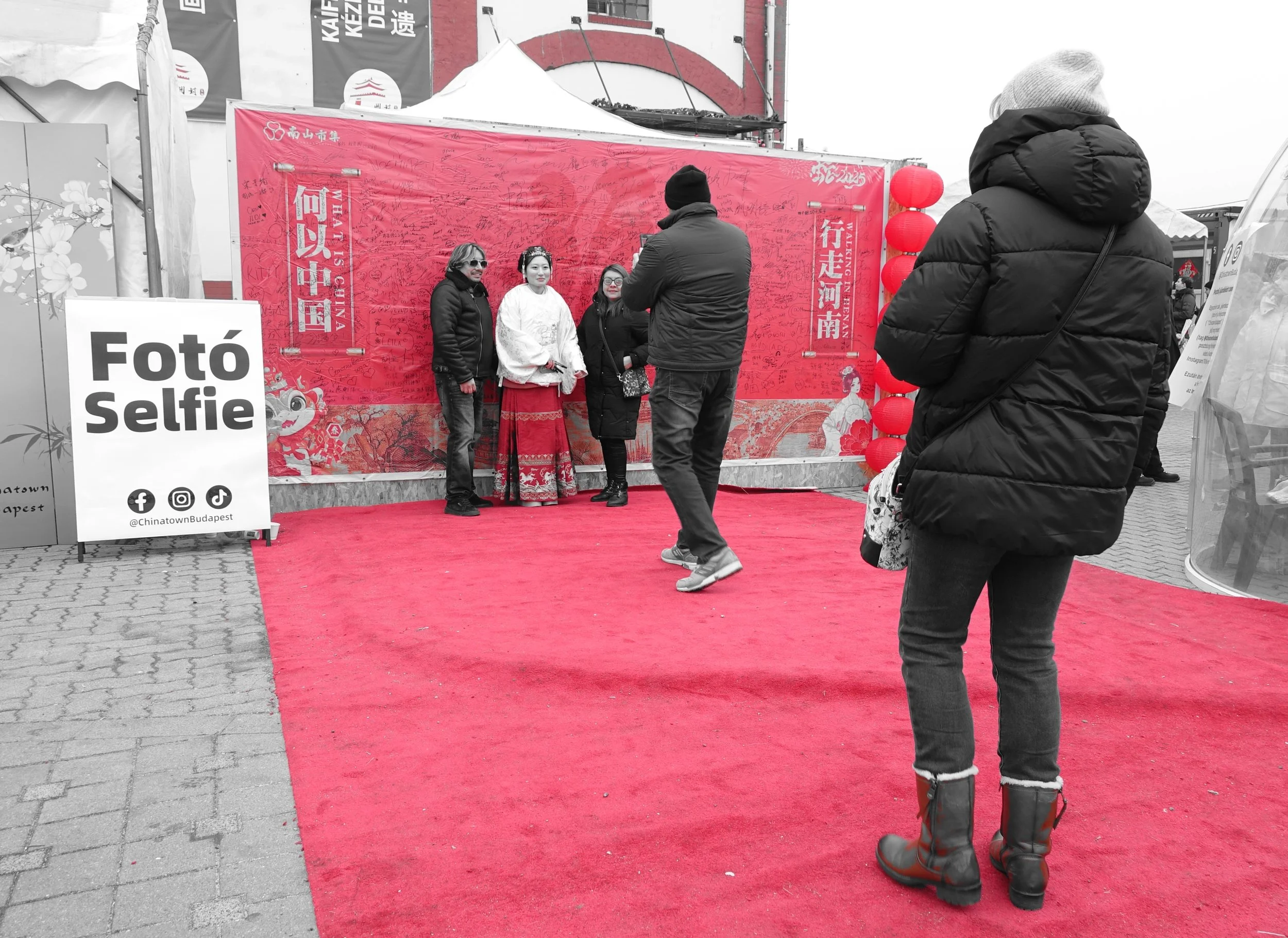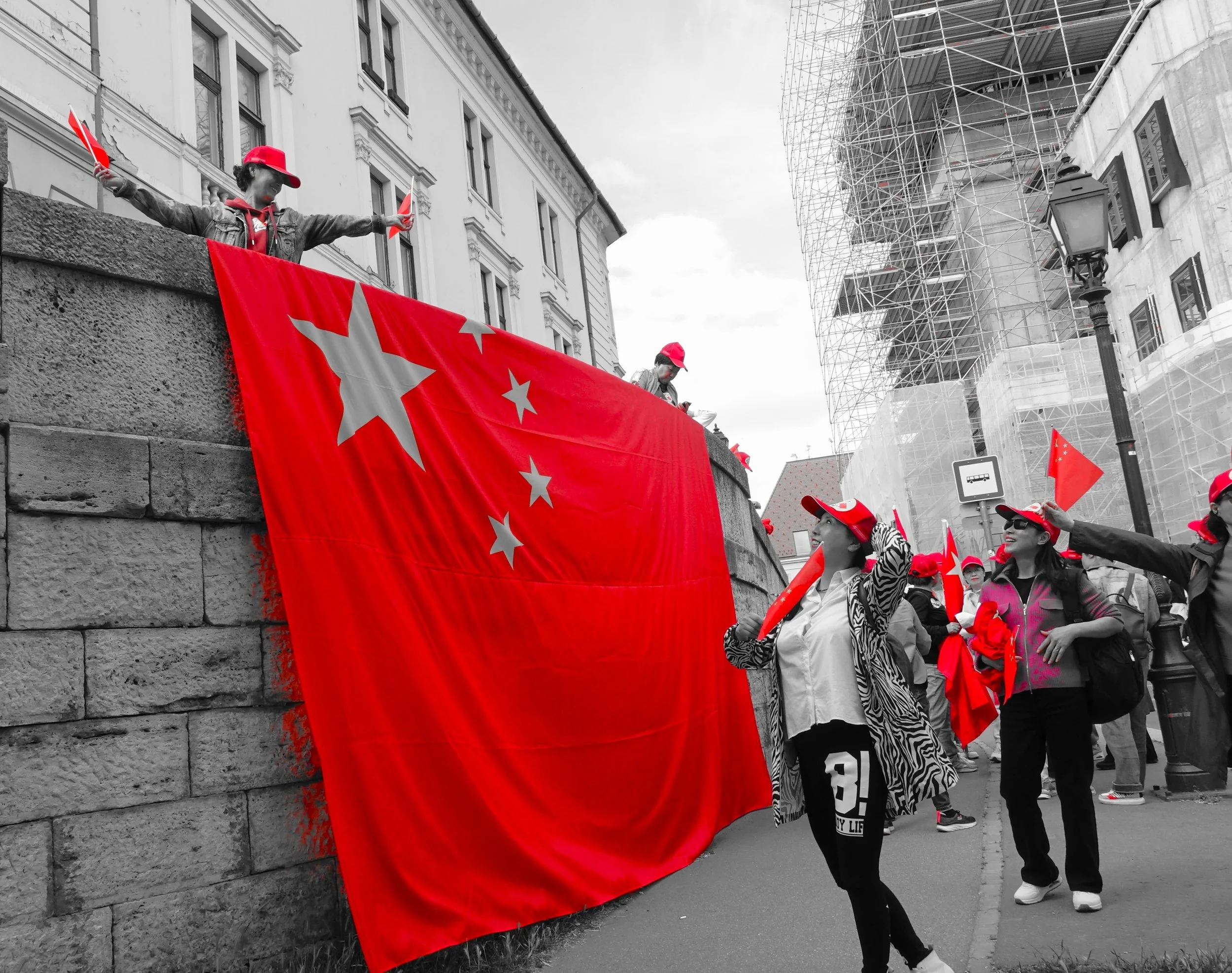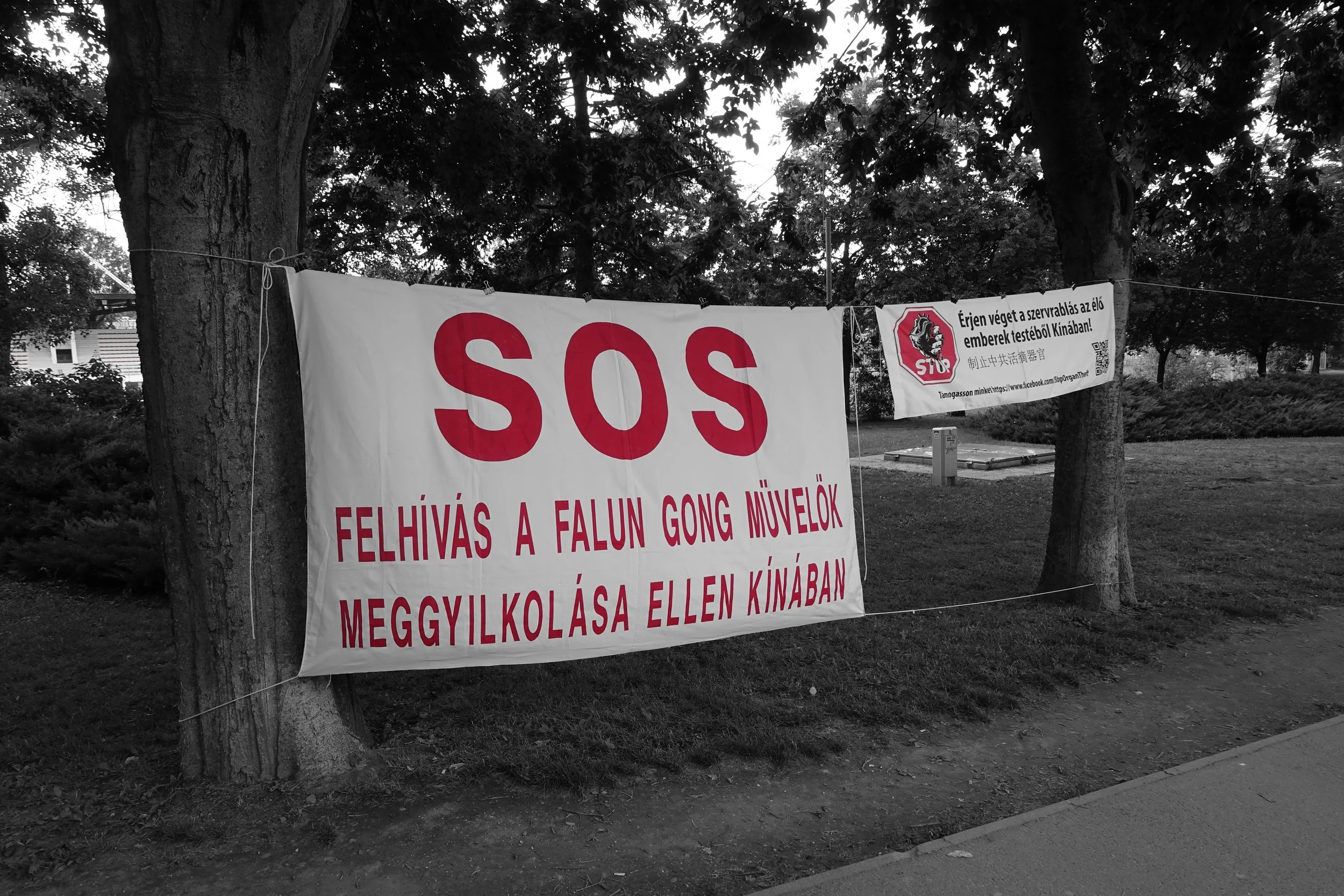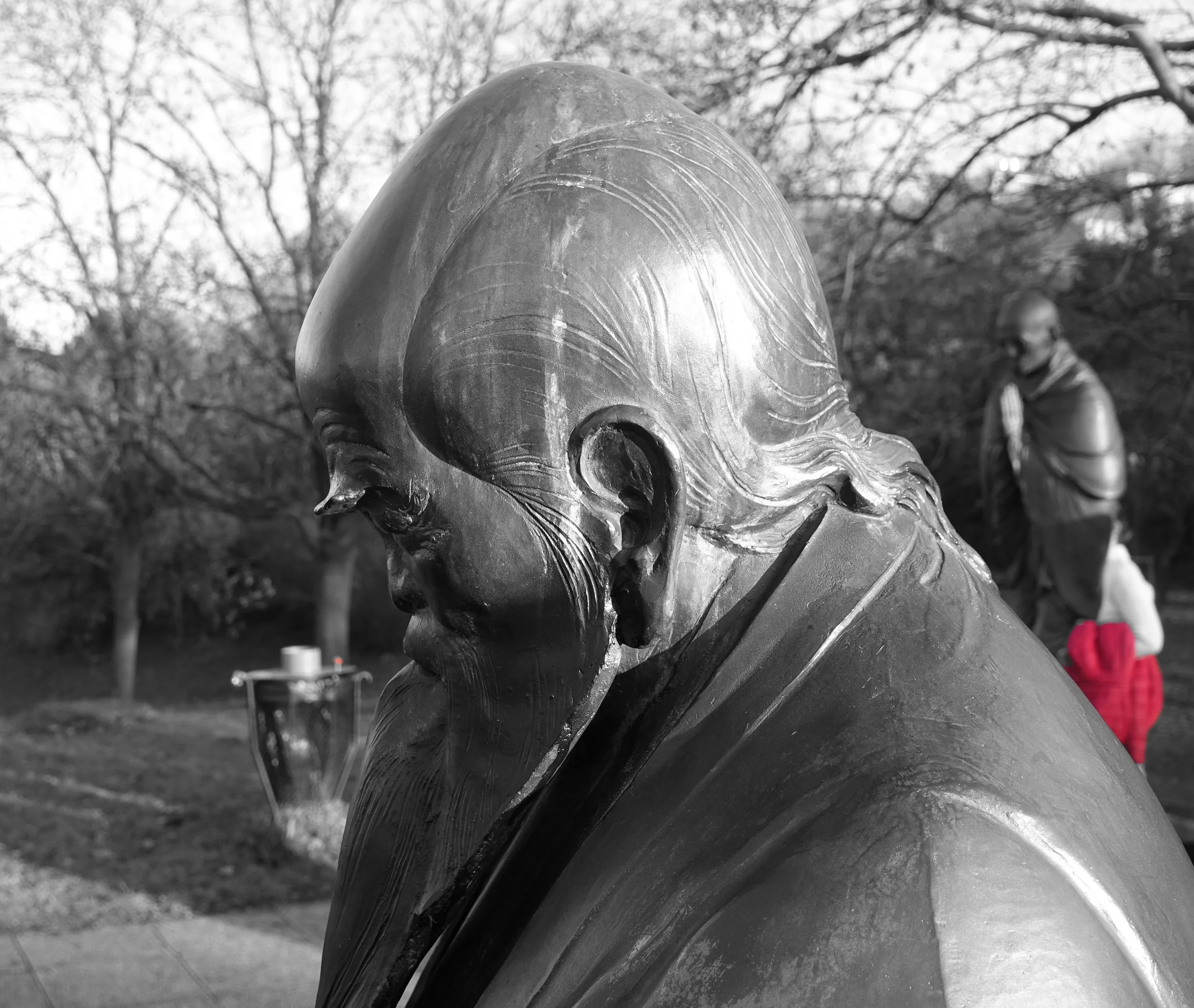Belt and Braces
Monori Centre, ‘China Town’ Budapest
The 2025 Chinese lunar celebrations in Budapest commenced on a bitterly cold January day. Although the Year of the Snake was upon us, no sensible cobra would have been seen out-of-doors on this zero-temperature Sunday. It was cold enough to freeze the wantons in your soup, although the local Chinese community, plenty of Hungarians and a gaggle of expats and tourists weren’t deterred from the festivities.
I remember attending Chinese New Year celebrations in London’s Soho under equally arctic conditions. The streamlined and sterile area around the Monori centre was quite different to cramped, atmospheric Gerard Street. The vibe was similar though. Lion Dances and drumming bands entertained while steaming woks provided nourishment on a winter’s afternoon. Young people turned out in flimsy Hanfu, cheongsam and Tang suits, were determined to maintain traditions regardless of the weather. Red is deemed a lucky New Year colour in Chinese culture and there was an abundance on display, suggesting a warmth that certainly couldn’t be felt in the finger tips.
Selfie time on a chilly afternoon
The Monori Centre and its surrounds have become Budapest’s official China Town, located in Kőbánya, a former industrial district. Chinese warehouses, shops and restaurants have colonised this corner of the city’s rust belt, bringing energy and occupation to an area otherwise abandoned by the twenty-first century. It’s a peaceful capture, mostly without rancour or local opposition.
If we don’t include the Roma who have lived here for many centuries, the Chinese community are Hungary’s largest ethnic minority group. During communism there were official links between the two countries but little movement of people. As the system changed in the early nineteen nineties, the new liberal regime in Hungary exercised an open-door policy to immigration. Poor rural workers from mainly Zhejiang and Fujian provinces jumped at the chance to live here, as did people from other parts of the Far-East and Central Asia. The Chinese diaspora now measures between 30-50,000 people in Hungary.
Traditional food available during the festivities
A half-mile from the Monori district towards the city centre, the Four Dragons market in Józsefváros epitomised the period of the ‘wild east’ in the 1990’s. The derelict train yards along Kőbánya út became a wholesale market of vast proportions. Competition in both legal and illegal trades lent the former train manufacturing site a tough reputation. ‘No Cameras, No dogs, No Guns’ used to greet shoppers on arrival. The area, now called the Eurázsiai Centre or Józsefvárosi Piac, is under different ownership and its reputation has improved somewhat.
Passing the entrance gate, a sign tells you cameras are still forbidden and it’s like entering a different continent. Little Hungarian let alone English is spoken here. Whether purchasing twenty fishing rods, a hundred stress relief balls or fifty cooking pots, you should leave your plastic at home. Cash remains king as you deal with traders from the ‘stans’, the Caucasus, Russia, Turkey and China. You might get a receipt for your purchases but don’t expect guarantees on electrical goods. Open conflict between different national groups has long gone but this massive wholesale market still represents Budapest at its most cosmopolitan and edgy.
Along with the ‘official China Town’ around the Monori Centre, the older market supplies products to the ‘vegyes boltok’ (mixed shops) found all over the capital and further afield. You can get most ‘dry’ groceries, clothing, homeware and hardware products in these cramped outlets. While Hungarian owned retailers generally lock up at seven pm on weekdays, most close their doors at lunchtime on a Saturday and don’t open at all on a Sunday. The ‘vegyes boltok’ open later on work days and remain open throughout weekends.
Most importantly, unlike ‘corner shops’ in the UK, these outlets are frequently cheaper than the largely foreign owned supermarkets. Granted, the retail giants also keep long hours, but the price difference is noticeable. For example, I checked the cost of a litre of Baba shower gel across three shops. In a good quality German ‘pharmacy’ (similar to ’Boots’) it cost 1599 forints. In the country’s leading Dutch supermarket chain, it was 1700 forints. In a largish, Chinese owned ‘vegyes’ store, only 950 forints. This is just one example and there are surely exceptions to the rule but if you run out of shower gel at ten o’clock on a Sunday night, check out your local mixed shop. Of course, long work hours present a challenge to Chinese family life. In districts eight and ten it is not unusual to find older Hungarian women working as ‘nannies’ to their eastern neighbour’s children.
With the exception of household fuel, Hungary has recently experienced the highest inflation across all EU nations. During and after the energy crisis, prices have frequently pushed towards western European levels, as wages remain among the lowest in the EU. It’s not surprising that packed to the ceiling mixed shops are also full to the rafters with customers. While the quality of products may not rival that found in Hungarian, German or other European retailers, for consumers on low incomes with mouths to feed, this is a secondary consideration. Chinese and other Asian owned ‘vegyes boltok’ play an important role in maintaining Hungarian living standards across poorer and not-so- poor parts of the country alike.
In 2013, the Hungarian government introduced a residency bond scheme which led to the most recent influx of Chinese migrants: often wealthy urbanites who could afford BMWs and to buy properties in the Buda Hills. They possess sufficient capital to set up businesses and send their children to international schools. A Lutonian Abroad senses that it is the wealth of this second wave that has contributed to the development of the Monori Centre and surrounding area. However, SUVs with tinted glass also depart the older ‘Chinese market’ after a day’s trading. Long hours and years of work have paid dividends for some in the end.
At a strategic level, the national government thinks it’s important to look east. Leading politicians even justify this by pointing out that the original Hungarian tribes came from central Asia. It’s a commonly held belief here that after a thousand years of being surrounded by enemies, it only makes sense to look further than the EU for friends. After Germany, China is the second largest investor in the country. According to the MERICS research institute, Hungary captured 44 percent of all Chinese Foreign Direct Investment into Europe in 2023, or more than the “Big Three”- France, Germany and the UK, combined.
Hungary is a partner in the worldwide Belt and Road initiative, whereby the Chinese state has lent the Magyars a huge amount of money on ‘favourable terms’ to finance infrastructure projects. Not that they are without controversy. A huge sum was borrowed by the Fidesz government to complete the final stage of the high-speed train route from Athens to Budapest. Apart from the money expended, the choice of contractors to carry out the construction has attracted cries of nepotism. Work continues to proceed.
In comparison, the initiative to build a Budapest campus for the prestigious Fudan University of Shanghai has been blocked for now by public opinion. The proposed site is the former athlete’s village of the 2024 European Championships. Originally, the idea was to build a campus for Hungarian students who often live in overcrowded tower blocks, sharing three to a room. Under the revised plan, there was to be a campus built specifically for students of the elite Chinese university. One where few Hungarians were likely to live, considering admission and accommodation fees. The building work was scheduled to be carried out by imported Chinese labour, using Chinese building materials. The local liberal government in Budapest contested the plans strongly, even naming new streets in the area provocatively, in case the project ever happens. Free Hong Kong Road, Uyghur Martyrs’ Road and Dalai Lama Road have been adopted in lower Ferencváros . The government has backtracked, fearing a citizen’s revolt but the proposal for an elite Chinese campus in the city remains on the table.
Local Chinese people waiting to greet President Xi Jinping in the Castle district.
Protest in Hungary against alleged human rights abuses or racism within the Chinese state are rare. President Xi Jinping has generally been welcomed on his visits. In spring 2024 he made a last- minute addition to his European itinerary to visit Budapest. A Lutonian Abroad encountered groups of flag-waving Chinese residents in the Castle district. When he enquired as to what was happening, they couldn’t or wouldn’t offer an explanation. It seemed that fear of protest had led to an official instruction to ‘stay mum’ about the day’s proceedings. A united front of silence greeted him and he left the celebrants to enjoy their afternoon, waiting to catch a glimpse of their leader.
Getting flags ready to greet Xi Jinping
Last year the presence of Falun Gong marked a sign of rare discontent from the emigrant community. Outside their temporary ‘workshop’ on Margaret Island, this quasi-religious group hung signs declaring human right’s abuses on mainland China. Their posters were suspended in a prominent location near the entrance to the island although the message was only offered in Hungarian. With supposed right-wing allegiances, the Falun Gong has clashed worldwide with Xi’s communist government.
Falan Gong call for action against persecution in China
As in the UK and other western countries, Confucius Societies have emerged across Hungary’s learning landscape. They operate in nine towns and cities across thirty-five educational institutions. Chinese language classes and cultural activities are offered to local university students. Not unlike the British Council or Alliance Française in other instances, they represent the development of Chinese soft power to accompany the iron rails of the high-speed train connection.
Despite allegations that Hungary is the trojan horse of the European Community, Viktor Orbán believes the Hungarian state can trust their eastern relatives across a number of beneficial partnerships. For example, the Magyars were the only EU country to import Chinese vaccines, as an emergency measure, during the Covid crisis. The cost of these purchases were considered excessive in the eyes of some. Nor were they always effective, particularly with the elderly.
Hungary has developed battery factories to supply important German car plants located around the country. Already, there are complaints that these newish factories are staffed mostly by Asians and concerns expressed that these ‘guests’ won’t go home when their visas expire. Recently, the government passed legislation limiting the use of guest workers. Viktor Orbán and all future leaders of the country are in a dilemma over this issue. Hungary faces the same population decline, albeit slower than some, as elsewhere on the European continent. The workforce deficit has been accentuated by the million people who have left the country over the last twenty years. Not enough have returned to maintain the working population. Growing a new workforce for blue collar occupations, is proving as difficult here as in the UK’s social care or agricultural sectors.
In the philosopher’s garden on Gellért Hill, the statue of Lao Tzu (Laozi) looks down his pointed beard towards the city. Among many statements attributed to the Chinese Daoist is: ‘The softest things in the world overcome the hardest things in the world.’ Belt and Road is the initiative most publicised in terms of growing Chinese power. As in other countries, if you look closely enough, a broader approach to Sino influence is apparent. Like dancers taking to the outdoor stage in freezing Kőbánya, so one step at a time, the Asian century embraces Hungary. Belt and braces might not be traditional Chinese attire but they provide an apt description of how hard and soft power is consolidated in Budapest and elsewhere in the country.
Statue of Lao Tzu in Philosopher’s Garden, Budapest.






